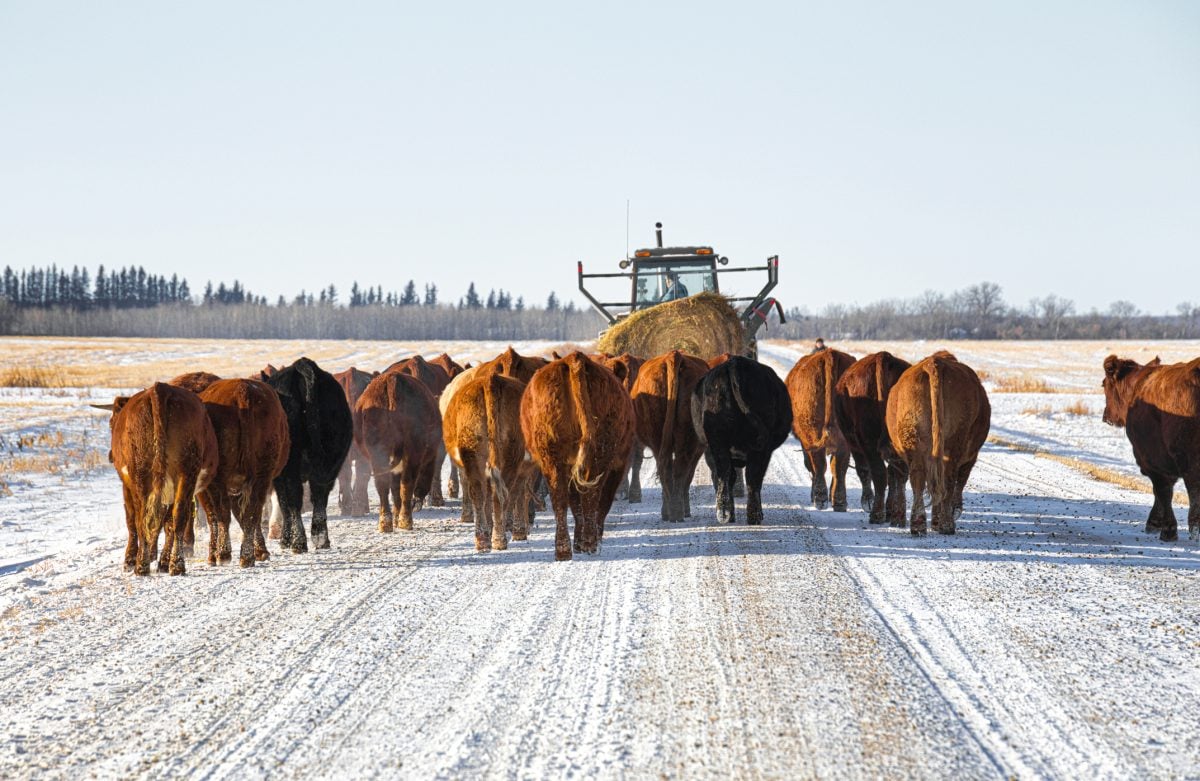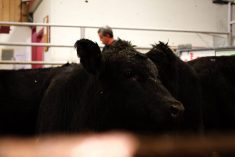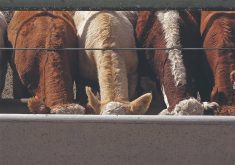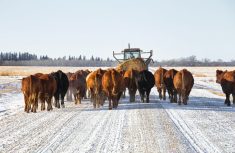Western Canadian yearling prices experienced a week-over-week decline of $5-$8 with some pockets deteriorating $10 to as much as $12. Adverse weather in southern Alberta has resulted in limited buying interest from main feedlot operators.
Feedlot Alley has received 150-200 per cent of normal precipitation over the past 60 days. Snow and rain, along with extreme cold followed by warmer temperatures, have caused pen conditions to deteriorate. Cattle performance has suffered and the rate of gains is not up to par. Feedlots are struggling to keep cattle dry with straw now trading around $125 per tonne in the Coaldale-Picture Butte area. Needless to say, it’s a difficult situation and there’s no rush to bring in replacements until conditions improve.
Read Also

U.S. livestock: CME cattle tick lower in thin pre-holiday trade
Chicago | Reuters – Chicago Mercantile Exchange live and feeder cattle futures were little changed but ended slightly lower on…
In central Alberta, medium- to larger-frame 950-lb. tan mixed steers with medium butter dropped the gavel at $156. (This is down about $40 from the December 2017 highs.) A group of mixed black larger-frame fleshier heifers averaging 920 lbs. sold for $148 in the same region. There were some markets in Alberta that quoted fleshier medium-frame steers weighing 900-925 lbs. at $150-$154. Prices in eastern Saskatchewan and Manitoba were $2-$4 higher than in Alberta but there was minimal support. Prices also failed late in the week.
Calves and cattle fit for grass were down $4-$6 on average from week-ago levels. Given the weaker live cattle futures, feedlot margins could be deep in red ink through the summer. Therefore, ranchers and the small farmer-cattle operator were not willing to take on the risk this week and tied down their bidding hands. Tan steers weighing 575 lbs. traded at $222 in central Alberta while similar Simmental calves averaging 515 lbs. were quoted at $231 in southeastern Saskatchewan.
The barley market was subdued in Saskatchewan but in southern Alberta, offers ranged from $245 to as high as $250 per tonne delivered. Road ban season is underway and difficult off-farm logistics have slowed farmer selling. It’s not only the price, but sellers cannot deliver on time. By the end of the week, feedlots are working down to the last kernel.
— Jerry Klassen manages the Canadian office of Swiss-based grain trader GAP SA Grains and Produits Ltd. and is president and founder of Resilient Capital, specializing in proprietary commodity futures trading and market analysis. Jerry consults with feedlots on risk management and writes a weekly cattle market commentary. He can be reached at 204-504-8339.














